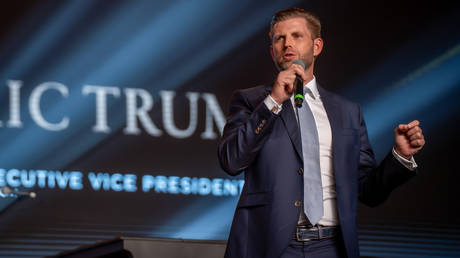The rise of AI in CEO communications—and the credibility threat it poses

CEOs have become more than just corporate leaders—they’re among the most valuable assets on the balance sheet. Great leadership can drive billions in market cap by shaping narratives and galvanizing stakeholders. But what happens when the communication tools they use to build credibility start to erode it?
We’re entering a new era in CEO communications, one where human messages increasingly filter through the lens of AI. Analysts and investors have long leaned on AI-powered language models and sentiment analysis to dissect earnings calls, parsing executive tone, word choice, and delivery for signals on strategy, risk, or future performance. Now, CEOs and their teams are flipping the script—crafting messages with the help of generative AI to appeal to the very same systems analyzing them.
It’s a feedback loop of machines talking to machines. And while the tech arms race might make earnings calls look polished and sentiment scores spike, it also risks creating a sentiment gap. In the end, credibility is still the most valuable currency in leadership—and AI can’t replace that.
The CEO Premium Meets the AI Arms Race
Corporate valuation has always been about more than just numbers. Investors have baked intangibles like brand equity, leadership narratives, and cultural impact into their models. As NYU finance professor Aswath Damodaran puts it, valuation is as much about a company’s story as it is about spreadsheets.
The CEO’s job is to integrate those stories with their strategies. Jensen Huang didn’t make Nvidia a trillion-dollar company because of flawless financial execution—he did it by selling a vision of AI as the engine of the future, powering everything from healthcare to climate solutions. That’s the CEO premium in action: the ability to turn a strategic story into market-moving value. But here’s what no one’s saying out loud: when that story is over-engineered with AI, something critical is lost.
Consider this: Bank of America’s S&P 500 corporate sentiment tracker, based on an analysis of thousands of earnings transcripts, hit an all-time high earlier this year, even as analysts lowered growth expectations for 2025. The disconnect is stark. While executives are optimizing their tone and language to look and sound bullish, it’s masking underlying realities.
We’re looking at a sentiment bubble, where polished communications are designed to impress algorithms but are creating distance from actual performance. The result? A risk to long-term stakeholder confidence and broader market integrity.
The Credibility Gap is Real–and Risky
AI-powered communications is an incredible asset. It can help executives sharpen their messages, anticipate audience reactions, and streamline delivery. But when it starts to obscure reality—or worse, is used as a veil—it risks blowing up the most important thing any CEO has: credibility.
Markets thrive on credibility. Investors place a premium on CEOs who communicate clearly and consistently, and are transparent about their strengths and challenges. When communication becomes engineered for algorithms rather than stakeholders, it creates a hollow effect—polished on the surface, but leaving questions below.
This is more than theoretical. A recent study published in Harvard Business Review found that employees rated CEO messages as less helpful if they thought the message was AI-generated—even when it wasn’t. Perception alone was enough to damage trust. That finding underscores the growing credibility risk CEOs face when misusing or leaning too heavily on AI.
What CEOs Need to Do Now
So where does this leave us? The CEOs who win in this new reality won’t be the ones with the most AI-polished messaging—they’ll be the ones who balance technology with authenticity. Here’s how:
- Speak to Stakeholders, Not Just Algorithms: Say what you mean. Own the hard truths. AI should enhance a message, not sanitize it. AI-generated communications might score well with language models, but stakeholders—investors, employees, customers—aren’t grading on polish. They’re looking for clarity.
- Anchor Narratives in Performance: Narratives drive valuation, but they’re meaningless without numbers. If the results are strong, show your math. If they’re weak, explain why. Don’t let AI overinflate optimism. Instead, use it to sharpen transparency.
- Ensure AI Augments, Not Replaces: AI is great for refining delivery and identifying blind spots, but it can’t replace human judgment or instinct. Companies that over-rely on AI-driven clones or sentiment engineering risk losing the real connection that drives stakeholder engagement.
- Anticipate the Credibility Pivot: As sentiment inflation continues, markets will inevitably adjust. Investors will begin looking for the next differentiator, pivoting from polished delivery to deeper signals of authenticity. CEOs who lean into direct, unvarnished communication will stand out.
- Get Ahead of What’s Coming: The tools analyzing your every word are only getting more advanced. The only sustainable strategy? Consistency. Authenticity. Messages that hold up under scrutiny—algorithmic or human. If your leadership story can’t survive deep analysis, it was never leadership to begin with.
The Way Forward: Still a Human Game
AI is reshaping the rules of executive communications, but the most successful leaders will recognize that technology is a supporting act—not the star of the show. At the end of the day, the algorithms don’t close deals, inspire employees, or build relationships with customers—CEOs do.
In this next chapter of leadership, The CEOs who win won’t be the ones scoring highest on sentiment trackers. They’ll be the ones who use AI responsibly, stay grounded in performance, and lead with clarity and authenticity. Because when machines talk past each other, the whole system breaks down.
Credibility is still the most valuable asset a CEO has. And no algorithm can replace that.
What's Your Reaction?
 Like
0
Like
0
 Dislike
0
Dislike
0
 Love
0
Love
0
 Funny
0
Funny
0
 Angry
0
Angry
0
 Sad
0
Sad
0
 Wow
0
Wow
0
















.jpeg?width=1200&auto=webp&trim=0,0,0,0#)

































![[Video] Maddie Medley shares intense visuals for haunting track "Fawn's Rage"](https://earmilk.com/wp-content/uploads/2025/06/Screenshot-2025-06-30-at-7.51.44%E2%80%AFPM-800x777.png)











































